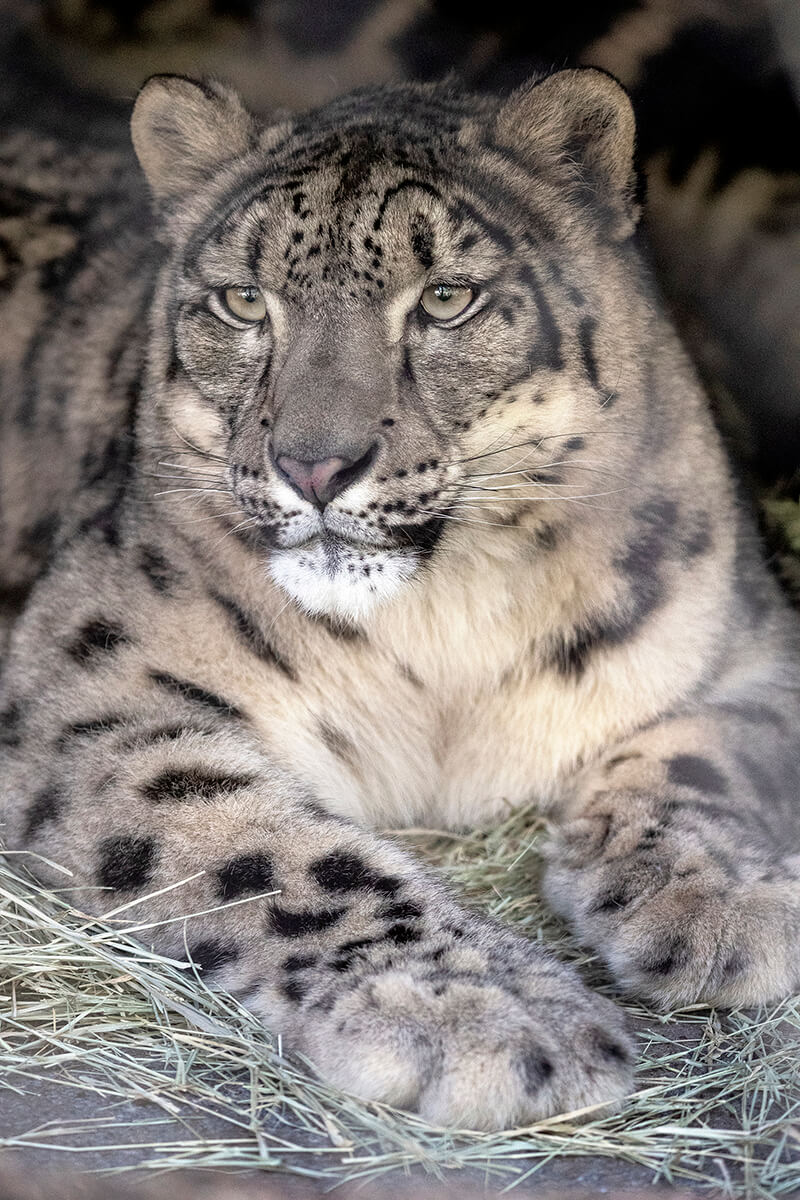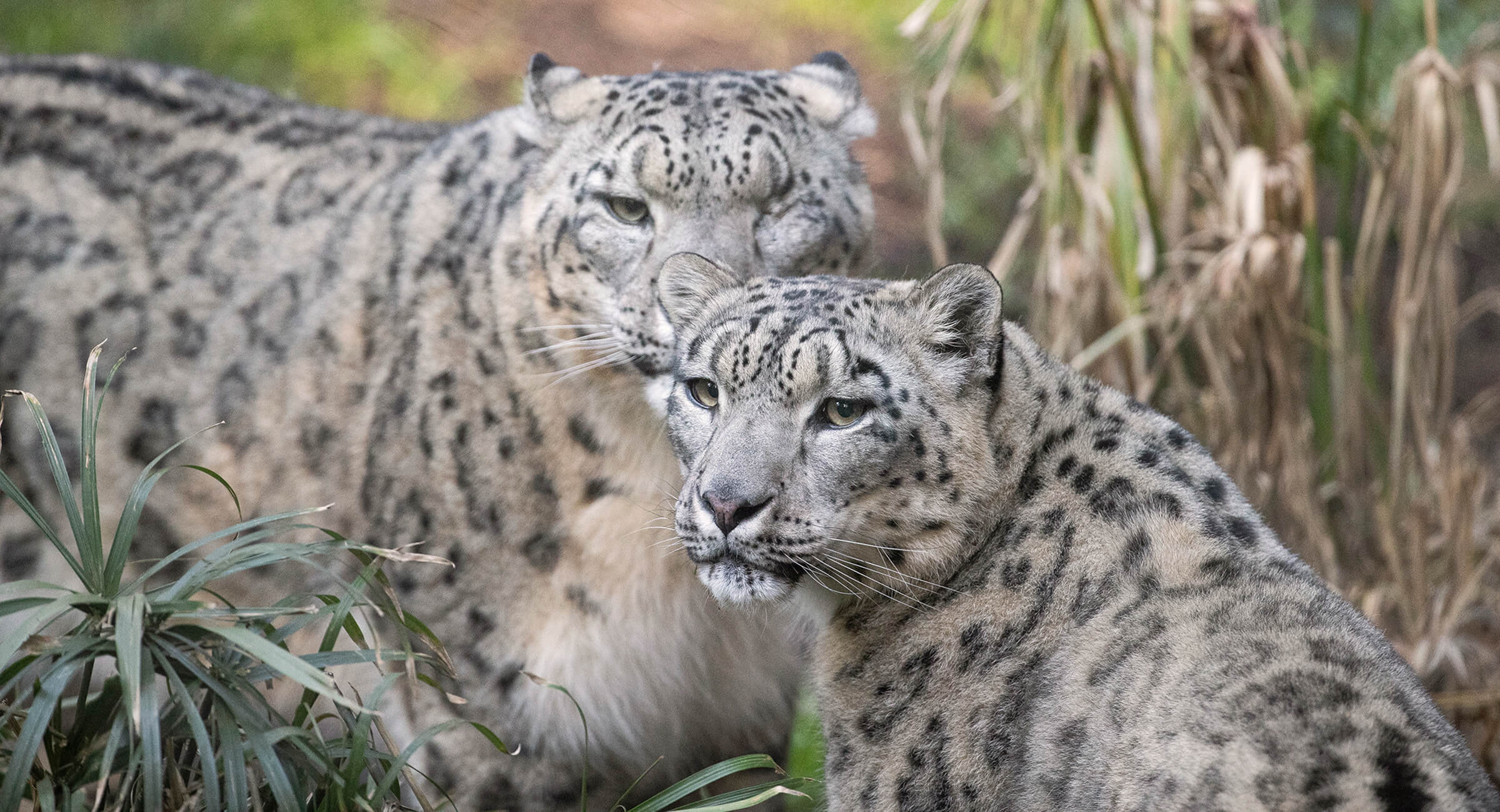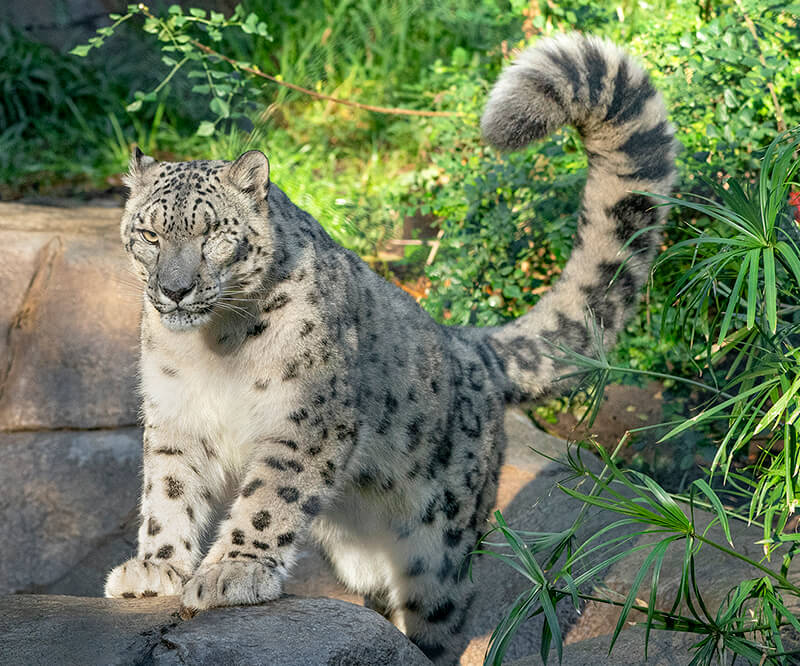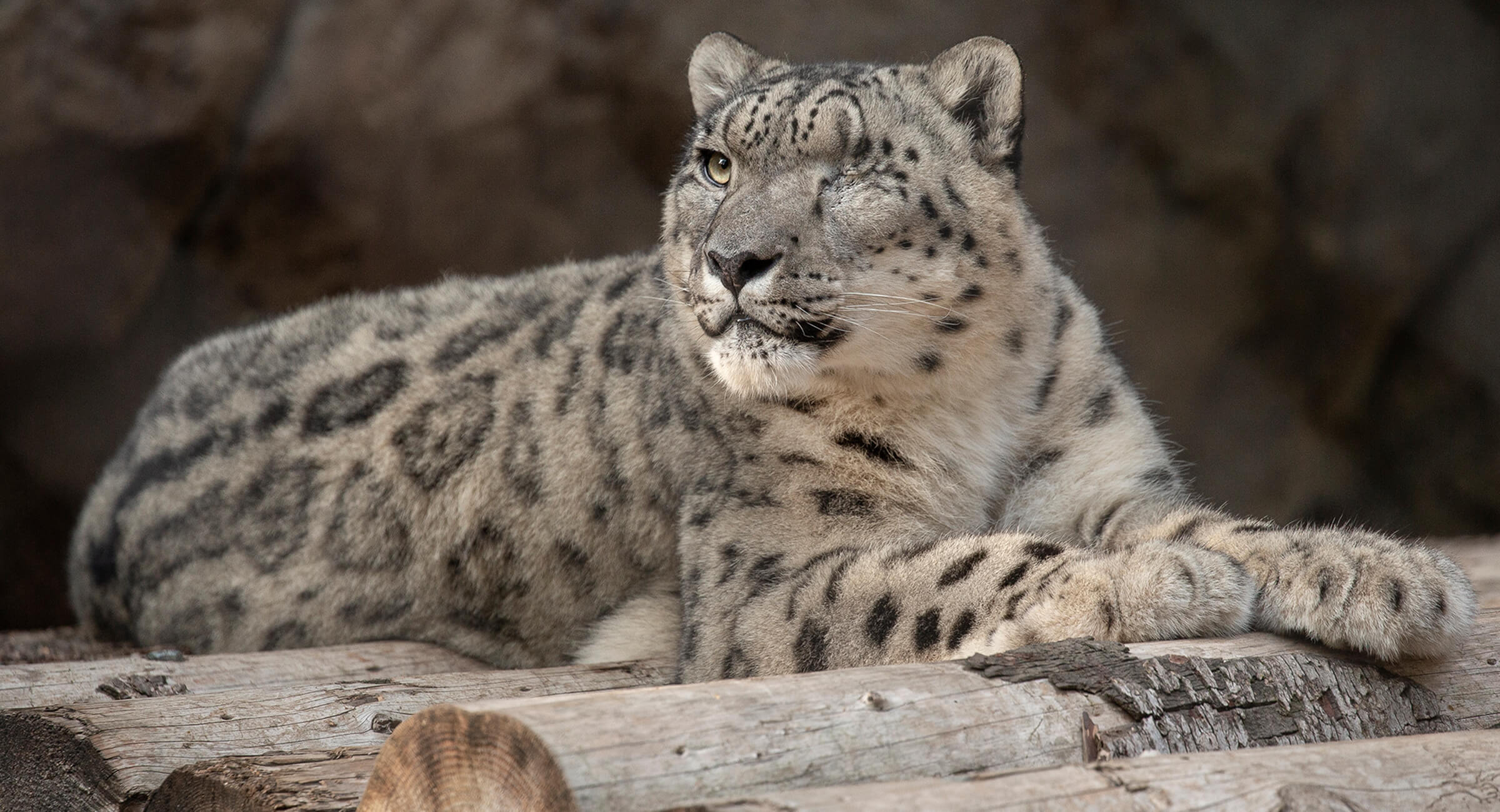
As a species, the snow leopard Panthera uncia is so elusive in its native range that it is nicknamed the “gray ghost of the mountains.” Inhabiting swaths of northern and central Asia, including the Himalaya Mountains, snow leopards live in alpine areas at high elevations—up to 18,000 feet. The difficulty in reaching their habitat and their ability to survive in harsh, cold conditions make them even harder to detect in the wild. [caption id="attachment_135131" align="aligncenter" width="800"] MYSTERY GIRL
MYSTERY GIRL
Little by little, Naphisa is letting her personality shine through.[/caption] The rarity of observations gave snow leopards almost mystical roles in folklore. Their existence was the stuff of legends. And now that Naphisa, the most recent addition to our snow leopard family, is here at the San Diego Zoo, it’s clear that from the tip of her adapted-for-the-cold nose to the end of her three-foot-long tail that can double as a scarf, she is every inch the Asian cat of mystery. But Naphisa seems to be ready to share her secrets with us, and we are eager to listen. 
That’s the Spirit
"She started out as a very reserved cat,” says Kelly Murphy, a wildlife care specialist at the Zoo. “But she’s turned into quite the ‘talker.’ She greets us with twittery, meow-like sounds, and when shifting between visible and nonvisable portions of her habitat, she lets us know what she’s thinking.” With her combination of looks and personality, Kelly notes that it’s no surprise that the cat’s name translates to “precious gem” and “sassy but beautiful,” depending upon the dialect and/or source consulted. Arriving at the Zoo from New England last December, Naphisa has access to both visible and nonvisible areas of her habitat. The initial settling-in period allowed the newcomer to become familiar with her surroundings at her own pace. “She is a young cat, not quite 2 years old, and a petite 70 pounds,” Kelly explained. “We wanted her to have time to not only acclimate to her new environment, but to get used to us, as well. We have to earn the animals’ trust and respect.” Naphisa makes her home in the Asian Passage habitat, where she can see, hear, and smell the other feline residents. It didn’t take her long to orient herself to her new digs, and, according to Kelly, use her surroundings to her mischievous advantage. “I was checking on her, and she wasn’t in her usual favorite spots,” Kelly says. “Turns out, after I would check a spot, she would move to that spot while I was looking elsewhere. It was like a game to her.” 
Living Like—and with—the Locals
Life at the San Diego Zoo held some surprises for the elegant leopard, including meals. “She hadn’t received a lot of exposure to different foods, such as whole-prey items,” Kelly says. “But she’s learning. A few knuckle bones with ground meat smeared on them—she caught on pretty fast. Rabbit is her favorite.” Along with appreciating new cuisine, the hope is that Naphisa will take a liking to the locals as well—the snow leopards in particular. Naphisa came here with the hope that she will take part in the Snow Leopard Species Survival Plan (SSP) breeding recommendations. Her Mr. Right could be seven-year-old Ramil. But while biology would seem to indicate a match made in snow leopard heaven, the success or failure often comes down to more intangible matters. [caption id="attachment_135134" align="aligncenter" width="800"] LADIES’ MAN
LADIES’ MAN
Ramil, who lost an eye as a result of complications with glaucoma, was previously paired with Penny (pictured together above). Perhaps he is Naphisa’s “Mr. Right.”[/caption] For example, Ramil and the Zoo’s other snow leopard, Penny, spent the last two-and-a-half years in an on-again, off-again relationship, which is currently off—and produced no cubs. Maybe Naphisa and Ramil will find a love connection. “It’s not cut and dried,” Kelly explains. “Genetics are only part of the equation. Personality is a big factor. They have to like each other in order for the next chapter to start.” She adds that while snow leopard breeding season generally runs from late winter until April, Naphisa is not yet mature enough, so any cub talk will have to wait until the end of 2020 through early 2021—and that’s if they hit it off! 
The Big Picture
It is estimated that there are fewer than 6,000 snow leopards left in their native range. Although they are highly adapted to live in such cold conditions, with their thick coats, fat-storing tails they can wrap around themselves, snowshoe-like feet, and air-heating nasal cavities, there are challenges these big cats are not equipped to fight. As with many other species, snow leopards face habitat loss and fragmentation, poaching, and what Kelly refers to as retaliation killings. “If a snow leopard preys on livestock, farmers will hunt it down and kill it,” she explains. “We have to work with the local communities to recognize what a big role the snow leopards play in the ecosystem. If they aren’t around to eat wild ungulates, those animals will overgraze areas the farmers need for their livestock. It's all connected.” So while we celebrate the birth of all baby animals at the Zoo and Safari Park, adding numbers to the populations of endangered and vulnerable species like the snow leopard is vital. The breeding recommendations are designed to help bolster populations and give species more than a ghost of a chance to survive for the next generation.




